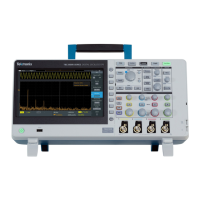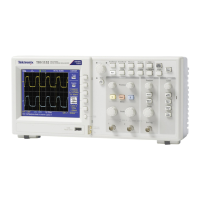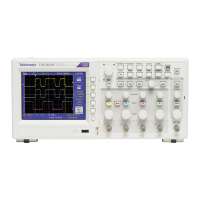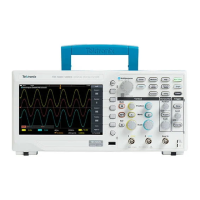Analyzing a waveform
After having properly set up the acquisition, triggering, and display of your
waveform, you can then analyze the results. Select from features such as
displaying automatic measurements, using cursors to measure specific parts of a
waveform, using math to perform an operation on two waveforms, and using FFT
to display the frequency components of a signal. You can also use Gating to
analyze only a specified part of a waveform when you take measurements. See
Taking a measurement on just a part of the waveform Gating on page 99.
Taking automatic measurements
Automatic measurements are a way to quickly take common measurements on a
waveform, such as signal frequency, period, rise and fall times, and so on. You
can take up to a total of six measurements at once, on any combination of input
channels and a math waveform. The measurements are shown on the main screen
in the order they were selected.
To take an automatic measurement:
1. Acquire and display a triggered waveform.
2. Push Measure.
3. Push the side-menu button to select the channel on which to take
measurements.
4. Use the Multipurpose knob to select and click a measurement. See
Automatic measurement descriptions on page 92.
The Measurement Selection bar at the top of the screen updates to show that a
measurement was selected for that channel (indicated by color), up to a
maximum of six measurements total to display.
5. Measurements with a down triangle contain a list of the input channels to use
for that measurement when selected. Select and click the input channels.
Then push the Menu On/Off button to close the list.
TBS2000B Series Oscilloscopes User Manual 89

